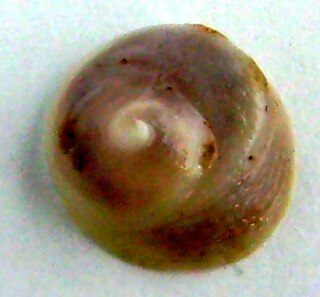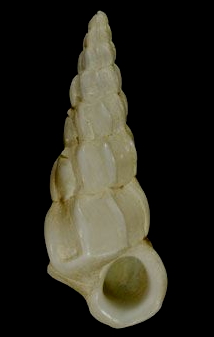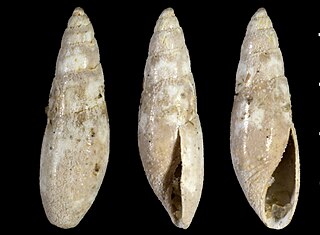
Seymour Island or Marambio Island, is an island in the chain of 16 major islands around the tip of the Graham Land on the Antarctic Peninsula. Graham Land is the closest part of Antarctica to South America. It lies within the section of the island chain that resides off the west side of the peninsula's northernmost tip. Within that section, it is separated from Snow Hill Island by Picnic Passage, and sits just east of the larger key, James Ross Island, and its smaller, neighboring island, Vega Island.

Sigapatella is a genus of small to medium-sized sea snails, marine gastropod molluscs in the family Calyptraeidae, the slipper snails, Chinese hat snails, and cup-and-saucer snails.

Acirsa is a genus of predatory sea snails, marine prosobranch gastropod mollusks in the family Epitoniidae. They are commonly known as wentletraps.

Penion sulcatus is a species of medium-to-large predatory marine snail or whelk, commonly called the northern siphon whelk or kākara nui in Māori, belonging to the whelk family Austrosiphonidae.

Acesta is a genus of marine bivalve molluscs in the family Limidae.

Penion is a genus of large marine snails, commonly known as siphon whelks, classified within the mollusc family Austrosiphonidae.

Volutomitra is a genus of sea snails, marine gastropod molluscs in the family Volutomitridae, the mitres, with global distribution.
The Lopez de Bertodano Formation is a geological formation in the James Ross archipelago of the Antarctic Peninsula. The strata date from the end of the Late Cretaceous to the Danian stage of the lower Paleocene, from about 70 to 65.5 million years ago, straddling the Cretaceous-Paleogene boundary.

Aeneator is a genus of sea snails, marine gastropod molluscs in the whelk family Tudiclidae.
Zegalerus is a genus of small to medium-sized sea snails, marine gastropod molluscs in the family Calyptraeidae, commonly known as slipper snails, cup-and-saucer shells, and Chinese hat shells.
Annaperenna verrucosa, common name the warty ranella, is a species of large sea snail, a marine gastropod mollusc in the family Bursidae, known as the frog shells.

Acteon is a genus of small sea snails, predatory marine gastropod mollusks in the family Acteonidae, the barrel bubble snails.

Bolma is a genus of medium to large sea snails with a calcareous operculum, marine gastropod molluscs in the family Turbinidae, the turban snails.

Zemacies is a genus of sea snails, marine gastropod mollusks in the family Borsoniidae

Antarctoneptunea is a genus of sea snails, marine gastropod mollusks in the whelk family Austrosiphonidae.

Conomitra is a genus of sea snails, marine gastropod mollusks in the family Volutomitridae.

Bursa rosa is a species of sea snail, a marine gastropod mollusk in the family Bursidae, the frog shells.

The La Meseta Formation is a sedimentary sequence deposited during the Eocene on Seymour Island off the coast of the Antarctic Peninsula. It is noted for its fossils, which include both marine organisms and the only terrestrial vertebrate fossils from the Cenozoic of Antarctica.

Crenilabium is a genus of small predatory sea snails, marine gastropod molluscs in the family Acteonidae, the barrel bubble snails.
Acteon chattonensis is an extinct species of sea snail, a marine gastropod mollusc in the family Acteonidae.














